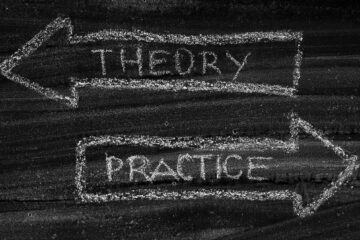Cross-posted at Education Week
In my last blog post, I discussed the deference and reverence once afforded educators by elected leaders regarding how to best run the American public education system and how all of that has come to an end. The result of this has been ever-shorter tenures for both our chief state school officers and school superintendents, pushing us closer to a brain drain of education leadership.
So how did this great reversal come to pass? I return to my story of when I ran for the school board in a small suburban Boston town in the late 1960s. When I was elected to the board, having heard the concerns of parents on my door-to-door campaigning, I started to raise questions about what was taught and whether the teachers needed some professional development. I was slapped down hard, not just by the administration, but by the other board members, all of whom made it clear to me that, on matters of substance, my job was to defer to the educational authorities from the superintendent on down. As board members, our job was to make sure that the business affairs of the district were in order and, should the superintendent want to retire, engage a consultant to find candidates for his replacement.
But discontent from highly educated constituents was not the only cause of the demise of the control of education politics by the professional educators. After the 1954 Brown v. Board of Education decision, the battle over school desegregation spread to the northern cities. By the 1970s, that battle was raging. In Boston, it was fanned into flames in Jonathan Kozol’s book Death at an Early Age, which portrayed the lace-curtain Irish teachers in the Boston schools as insensitive to the needs of their African-American students at best and close allies of the most die-hard opponents of integration at worst. The suburban elites turned against the teachers. Much the same thing happened in New York City when Ocean-Hill Brownsville turned very nasty.
That confrontation capped a long period in which teachers all over the country had seen their compensation slip further and further behind that of high-status professionals. Between the economic losses and growing antagonism toward teachers over racial issues, the AFT grew increasingly militant and the NEA dissolved as an association and became a union fighting for its rights against a public that no longer trusted its teachers, never mind revered them. When the teachers became members of militant unions, the public started to see them as in it for themselves, not the children they were teaching.
The old order crumbled further in the 1980s. When the Japanese successfully challenged American manufacturers with global brand names, American and foreign firms, in a fiercely competitive environment, began to shop around for states that could offer the most advantageous terms for location. Governors took the lead in recruiting firms to their state and in preventing firms already in their state from leaving. Again and again, they would hear from top executives that the companies would not consider coming to a particular state because that state could not provide workers with the skills they needed or schools their executives would want their kids to go to. These were mostly southern states whose schools lagged behind the rest of the nation. Their governors would go down in history as education governors. They took the education establishment on and discovered that it was good politics to do so. When the link was made to economic development and governors told the public that big changes were needed in education to promote economic development, the public came down on the side of their governors.
It was now official: The education community was no longer sacred and no longer insulated from politics. But it was worse than that. Increasingly, political elites of every stripe saw the professional education community itself as the problem.
That news became official with the onset of market theories of education reform. Republicans described professional educators as “the blob” and saw competition among schools as the only cure for a sclerotic education industry. Democrats were tired of spending ever more money and getting very little in the way of results. Increasingly, they saw the professional educators as in it for themselves, not the kids. Though they would not say so publicly, this view increasingly dominated their policy making, and provided a very fine petri dish for the growth of charters.

All these developments created an environment that was the very antithesis of the 1950s and 60s. People who ran for the local school board as supporters of the superintendent and the teachers were increasingly in trouble. Those who ran against the professionals and continued to oppose them when elected were the ones who got the favorable media attention. Ambitious people realized that, because very few people vote in school board elections, a well-organized minority that knows how to get media attention could take over a school board and those people who were elected could use that post as a springboard to higher office. Teachers’ unions were quick to realize the same thing. School governance was no longer out of politics. It was now nothing but politics. Though the mechanisms were different, much the same thing happened at the state level. Just as mayors battled with local school boards for control of the schools, governors battled with state boards of education and chief state school officers for control. It was now all contested territory—bitterly contested territory.
It is little wonder that capable people are less and less interested in leading school districts and state education systems. The United States now has a second-rate school system. If it does not solve these governance problems, it will, without doubt, soon have a third-rate school system.





